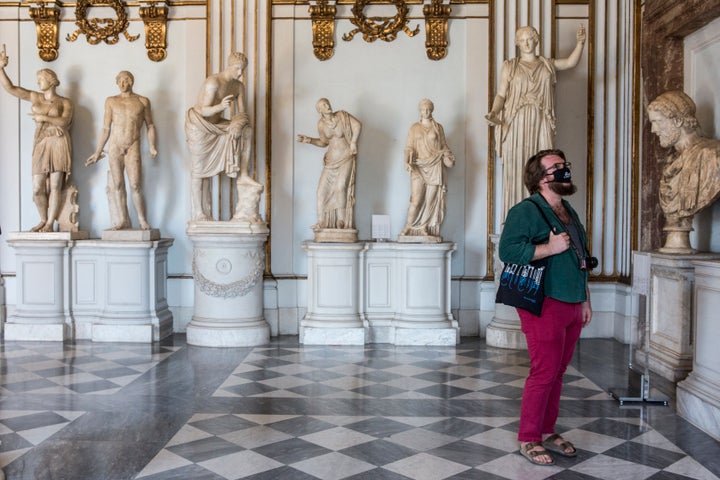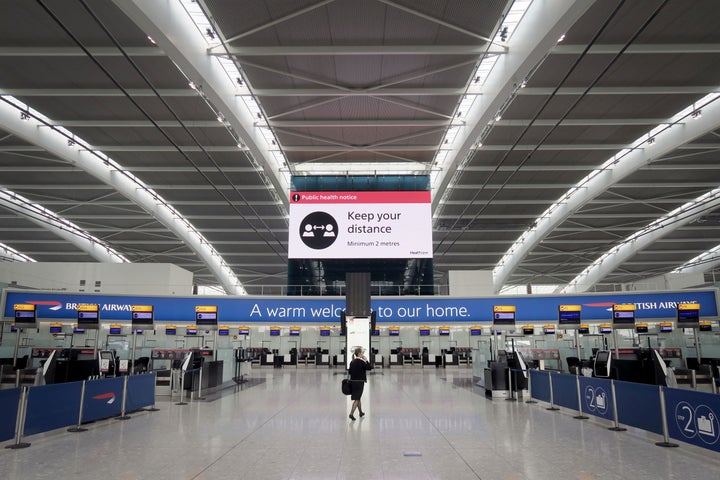European officials are contemplating something that for months has seemed nearly unimaginable: the return of international travel.
As the coronavirus pandemic spread around the globe, countries rushed to seal their borders and place restrictions on non-essential travel. With millions of people largely confined to their homes — allowed to do little more than buy groceries, go to the pharmacy and briefly exercise outdoors — the idea of flying to a far-away country to go on vacation has seemed like a fantasy.
Tourism is a crucial economic driver for many European countries, however, making up 10% of the European Union’s overall GDP. And with the number of new coronavirus cases falling across the continent at the same time as unemployment rises, there is a widespread desire to restart vacation-related travel in time for the summer holiday season.
The European moves represent a contrast with the United States, which shut its borders to travelers from China and Europe in March. Even as President Donald Trump pushes for states to begin reopening their economies, international travel remains largely off limits. On Tuesday, Trump said that he is considering imposing a ban on travel from Brazil as well.
“I don’t want people coming over here and infecting our people. I don’t want people over there sick either,” he said. “Brazil is having some trouble, no question about it.”
In Spain, however, the government announced this week that it would open its borders to tourists in late June.
“At the end of June, we should be able to start to reopen tourism activities, if we can maintain the de-escalation,” José Luis Ábalos, Spain’s transport minister, said, according to HuffPost Spain. “We must make Spain an attractive country from the health point of view.”
The lifting of restrictions on foreign tourists would coincide with the easing of domestic travel restrictions. The mandatory 14-day quarantine upon arrival into the country, which the Spanish government imposed earlier this month, would also be lifted.
“Nobody goes to a country to be in confinement,” Ábalos said.
Greece, which has had one of the lowest rates of coronavirus infections and deaths in Europe, reopened the Acropolis, museums and other major tourist attractions on Monday.
Italy, which has begun allowing people to start patronizing shops, bars and restaurants, has also announced that tourists from other European nations will be free to enter the country without quarantine starting on June 3.
“We’re facing a calculated risk in the knowledge that the contagion curve may rise again,” Prime Minister Giuseppe Conte said on Saturday.
“We have to accept it, otherwise we will never be able to start up again.”

Last week, the European Commission published a series of guidelines and recommendations, outlining how countries might lift travel restrictions safely.
The proposals suggest that European nations begin by relaxing travel restrictions between countries or areas where coronavirus infections are at a sufficiently low level, health care systems are able to accommodate both local residents and tourists, and robust testing and contact tracing systems are in place.
Contact tracing apps should be able to work across international borders, the Commission stated, so that travelers can be warned when they may have been exposed to the coronavirus.
Furthermore, airlines and airports would insist passengers wear masks, and check-in, drop-off and luggage pickup would be reorganized to avoid crowds.
Vouchers for canceled flights or holidays should be valid for at least a year, the Commission recommended, with protection against bankruptcies, so people would accept them instead of demanding refunds from cash-strapped airlines and travel firms.
The Commission recommended that European countries begin by relaxing travel restrictions within the EU first, and said that Europe’s external borders could be reopened in a second phase, after at least mid-June.
“Handled correctly, safely and in a coordinated manner, the months to come could offer Europeans the chance to get some well-needed rest, relaxation and fresh air, and to catch up with friends and family, in their own Member States or across borders,” the Commission stated.
Already, some countries have entered into direct agreements with other nations to create “travel corridors” or “travel bubbles.”
Three Baltic states — Estonia, Latvia and Lithuania — relaxed travel restrictions between their countries this month.
Australia and New Zealand recently announced plans to create a similar trans-Tasman travel bubble as well.
Italy has pushed back strongly against the European Commission’s suggestion of travel agreements between specific countries, however.
“We don’t accept bilateral agreements inside the European Union that will create privileged tourist paths,” Conte said last week, arguing that such travel corridors would represent the “destruction” of the EU’s single market.

In the United Kingdom, where the government’s official death toll from coronavirus stands at more than 35,000, the highest in Europe, Health Secretary Matt Hancock last week threw cold water on the idea that U.K. residents would be able to travel abroad this summer.
“It is unlikely that big, lavish international holidays are going to be possible for this summer,” he said. “I just think that’s a reality of life.”
In his address to the nation earlier this month, Prime Minister Boris Johnson announced that the U.K. would soon impose a 14-day quarantine on travelers coming into the country.
Last week, however, Ryanair CEO Michael O’Leary criticized the quarantine plan as “idiotic” and effectively unenforceable in an interview with the BBC.
“It’s unimplementable and unenforceable anyway, so I think people will largely ignore it,” O’Leary said. “You don’t have enough police in the U.K. to implement a two-week lockdown.”
He predicted that the quarantine measures would “disappear pretty quickly.”
He said that Ryanair hopes to operate 40% of flights — around 1,000 a day — from the beginning of July. Face masks and temperature checks will be required for both passengers and staff.
“People have been locked up since the middle of March. People are really gagging to get out and I think get abroad for the sunshine,” O’Leary told Reuters.
“Once the industry begins to recover towards September-October, I think we will be back to essentially open skies,” he said.
Heathrow Airport, which — before the coronavirus grounded planes — was the busiest in Europe, said that it had been working with the U.K. government on proposals to create “travel bubbles” between countries or cities that are very low-risk for coronavirus transmission.

Even if tourists start to book holiday travel in the coming weeks and months, however, some European business owners worry that the economic damage has already been done.
In Rome this week, at the open-air cafés in Piazza Cola di Rienzo, owners spent their mornings measuring the distance between tables and hoping to one day see their establishments full again, HuffPost Italy reported.
Everyone wore masks, the desire to start over was present, but a feeling of anxiety and resignation also hung in the air. “Will we be poorer?” business owners wondered. “Aren’t we already?”
“We work with tourists and the first bookings are for Easter next year,” one shop owner told HuffPost Italy this week. “The promised aid hasn’t arrived and we can’t pay the rent.”
“It will take at least a year from now to return to where we were before,” an employee of a clothing store predicted this week.
“Before COVID, we worked with 80% tourism,” said a store manager. “Now there is a question mark. We’ll see how it goes.”
A HuffPost Guide To Coronavirus
Calling all HuffPost superfans!
Sign up for membership to become a founding member and help shape HuffPost’s next chapter
Credit: Source link